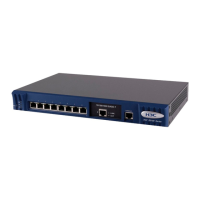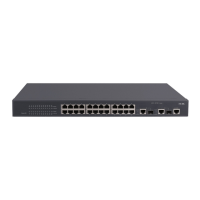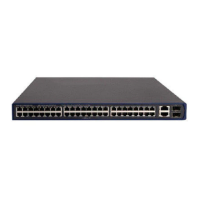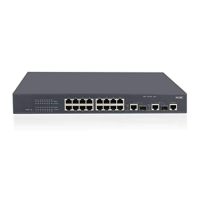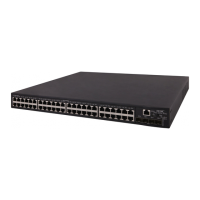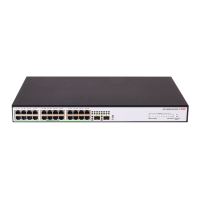1-11
To do... Use the command... Remarks
Display MP information
display cfd mp
[
interface
interface-type interface-number ]
Available in any view
Display the attribute and running
information of the MEPs
display cfd mep
mep-id
service-instance
instance-id
Available in any view
Display LTR information received
by a MEP
display cfd linktrace-reply
[
service-instance
instance-id
[
mep
mep-id
] ]
Available in any view
Display the information of a remote
MEP
display cfd remote-mep
service-instance
instance-id
mep
mep-id
Available in any view
Display the content of the LTR that
responds to LTM messages
display cfd linktrace-reply
auto-detection
[
size
size-value
]
Available in any view
CFD Configuration Example
Network requirements
As shown in Figure 1-6:
z The network comprises five devices and is divided into two MDs: MD_A (level 5) and MD_B (level
3). Ports Ethernet 1/0/1 through Ethernet 1/0/4 of every device belong to VLAN 100, and the MAs in
the two MDs all serve VLAN 100.
z In MD_A, there are three edge ports: Ethernet 1/0/1 on Device A, Ethernet 1/0/3 on Device D, and
Ethernet 1/0/4 on Device E; configure inward-facing MEPs on these ports respectively. In MD_B,
there are two edge ports: Ethernet 1/0/3 on Device B and Ethernet 1/0/1 on Device D; configure
outward-facing MEPs on the two ports respectively.
z In MD_A, Device B is designed to have MIPs when its port is configured with low level MEPs. In this
case, port Ethernet 1/0/3 is configured with MEPs of MD_B, and the MIPs of MD_A can be
configured on this port. Based on the design, you should configure the MIP generation rule of
MD_A as explicit.
z The MIPs of MD_B are designed on Device C, and are configured on all ports. Based on this
design, you should configure the MIP generation rule as default.
z Configure CC to monitor the connectivity among all the MEPs in MD_A and MD_B. Configure to
use LB to locate link faults or use LT to identify the paths between source and destination MEPs or
locate faults after the whole network status is obtained.
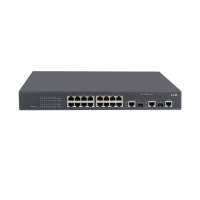
